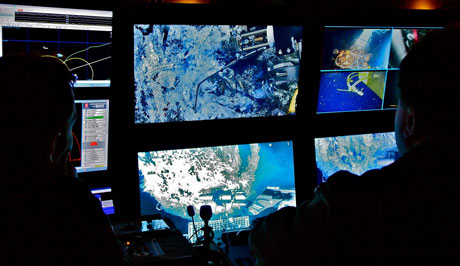MBL Develops New Strategy for Defining Function in Deep-Sea Microbial Communities

Mining the fluid samples she and her team collected from an actively venting, deep-sea volcano, MBL scientist Julie Huber has found an innovative way to simplify the enormous microbial diversity in the samples and hone in on specific, functionally important microbial groups.
Huber and Caroline Fortunato, an MBL postdoctoral scientist, recently published their results in the ISME Journal.
“In many environments, the microbial communities are incredibly diverse. If you just sequence [all the microbes] in your sample, you’ll find a bazillion different things,” Huber says. “We developed a way to reduce that diversity so we could address very specific questions, such as: Which microbes are fixing carbon, at what temperature, using what genes and what energy sources.”
The fluids that issue from deep-sea volcanoes offer a window into microbial activity beneath the ocean floor, an understanding of which is in its infancy. By experimentally manipulating the samples, Huber and Fortunato simulated various conditions in the subseafloor environment and observed how groups in the microbial community responded, by examining the microbes’ gene expression patterns.
 The R/V Falkor’s control room during a dive of the remotely operated vehicle ROPUS to Axial Seamount to collect samples, Oct. 2013. Credit: Carola Buchner
The R/V Falkor’s control room during a dive of the remotely operated vehicle ROPUS to Axial Seamount to collect samples, Oct. 2013. Credit: Carola Buchner“You could imagine lots of other experiments taking this approach,” Huber says.
“This study helps us understand the role of subseafloor microbes in ocean biogeochemistry, but more importantly, it is a great example of the power of combining multiple approaches to understand what’s happening in a complex microbial community,” says David Mark Welch, director of the MBL’s Bay Paul Center.
Huber led an unprecedented research expedition to discover microbial and viral life beneath the seafloor on the R/V Falkor, owned by Schmidt Ocean Institute, in 2013. (Photos and posts from the cruise log are here.) The study site was Axial Seamount, a deep-sea volcano in the Pacific Ocean about 300 miles off the Oregon coast. This work is supported by the Gordon and Betty Moore Foundation.
Citation:
Fortunato CS and Huber JA (2016) Coupled RNA-SIP and metatranscriptomics of active chemolithoautotrophic communities at a deep-sea hydrothermal vent. ISME Journal, doi: 10.1038/ismej.2015.258.